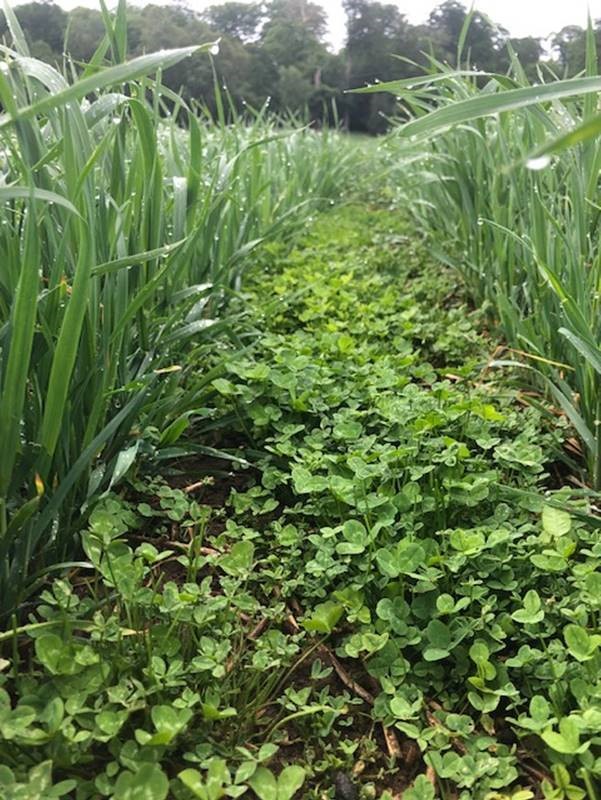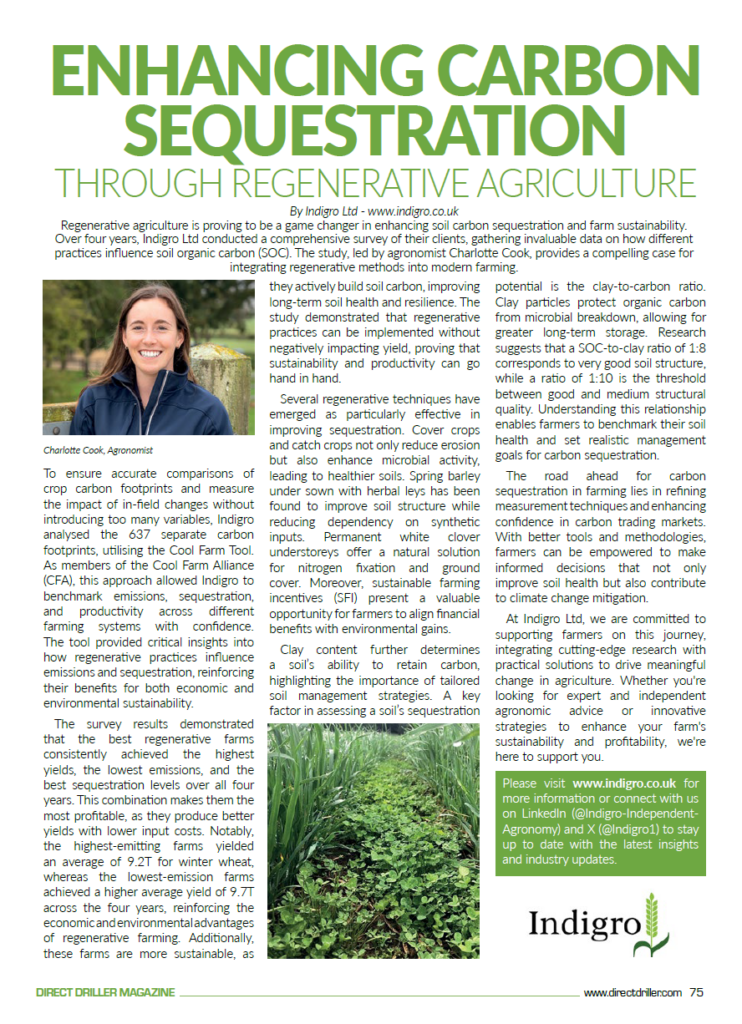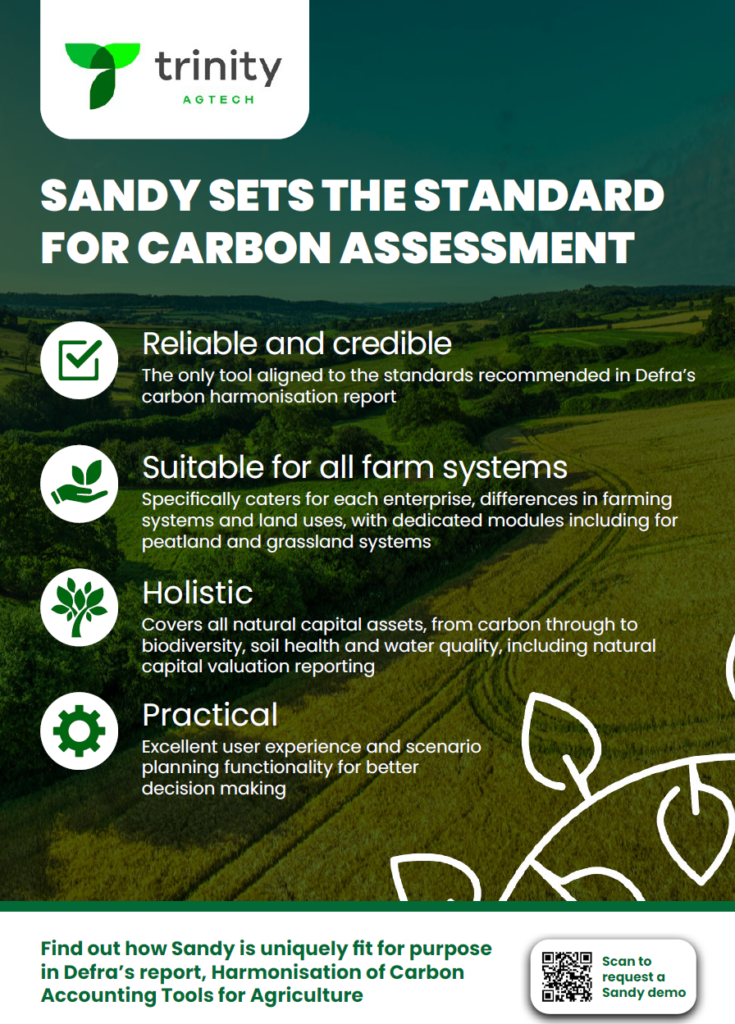By Indigro Ltd
Regenerative agriculture is proving to be a game changer in enhancing soil carbon sequestration and farm sustainability. Over four years, Indigro Ltd conducted a comprehensive survey of their clients, gathering invaluable data on how different practices influence soil organic carbon (SOC). The study, led by agronomist Charlotte Cook, provides a compelling case for integrating regenerative methods into modern farming.
To ensure accurate comparisons of crop carbon footprints and measure the impact of in-field changes without introducing too many variables, Indigro analysed the 637 separate carbon footprints, utilising the Cool Farm Tool. As members of the Cool Farm Alliance (CFA), this approach allowed Indigro to benchmark emissions, sequestration, and productivity across different farming systems with confidence. The tool provided critical insights into how regenerative practices influence emissions and sequestration, reinforcing their benefits for both economic and environmental sustainability.
The survey results demonstrated that the best regenerative farms consistently achieved the highest yields, the lowest emissions, and the best sequestration levels over all four years. This combination makes them the most profitable, as they produce better yields with lower input costs. Notably, the highest-emitting farms yielded an average of 9.2T for winter wheat, whereas the lowest-emission farms achieved a higher average yield of 9.7T across the four years, reinforcing the economic and environmental advantages of regenerative farming. Additionally, these farms are more sustainable, as they actively build soil carbon, improving long-term soil health and resilience. The study demonstrated that regenerative practices can be implemented without negatively impacting yield, proving that sustainability and productivity can go hand in hand.
Several regenerative techniques have emerged as particularly effective in improving sequestration. Cover crops and catch crops not only reduce erosion but also enhance microbial activity, leading to healthier soils. Spring barley under sown with herbal leys has been found to improve soil structure while reducing dependency on synthetic inputs. Permanent white clover understoreys offer a natural solution for nitrogen fixation and ground cover. Moreover, sustainable farming incentives (SFI) present a valuable opportunity for farmers to align financial benefits with environmental gains.

Clay content further determines a soil’s ability to retain carbon, highlighting the importance of tailored soil management strategies. A key factor in assessing a soil’s sequestration potential is the clay-to-carbon ratio. Clay particles protect organic carbon from microbial breakdown, allowing for greater long-term storage. Research suggests that a SOC-to-clay ratio of 1:8 corresponds to very good soil structure, while a ratio of 1:10 is the threshold between good and medium structural quality. Understanding this relationship enables farmers to benchmark their soil health and set realistic management goals for carbon sequestration.
The road ahead for carbon sequestration in farming lies in refining measurement techniques and enhancing confidence in carbon trading markets. With better tools and methodologies, farmers can be empowered to make informed decisions that not only improve soil health but also contribute to climate change mitigation.
At Indigro Ltd, we are committed to supporting farmers on this journey, integrating cutting-edge research with practical solutions to drive meaningful change in agriculture. Whether you’re looking for expert and independent agronomic advice or innovative strategies to enhance your farm’s sustainability and profitability, we’re here to support you.
Please visit www.indigro.co.uk for more information or connect with us on LinkedIn (@Indigro-Independent-Agronomy) and X (@Indigro1) to stay up to date with the latest insights and industry updates.


